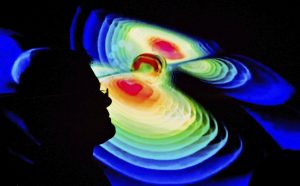Washington, Dec 22 (EFE).- Science magazine on Thursday declared the detection this past year of gravitational waves, which had been predicted to exist a century ago by Alberto Einstein but were spotted for the first time in 2016 by scientists, to be the scientific discovery of the year.
Adrian Cho of Science magazine told EFE that it was a rather easy choice, although there were many important scientific advances this year, because the observation of gravity waves confirmed a century-old prediction by Einstein himself that had eluded scientists up to now.

Cho also acknowledged that it is difficult to point to just one aspect of the discovery made by the Laser Interferometer Gravitational-Wave Observatory (LIGO) since the whole experiment was so mind-boggling.
He said that, personally, he felt that the most profound aspect of the “discovery” is that human beings were able to directly detect gravitational waves, which are extremely faint and heretofore had been below the level of detectability of mankind’s best instruments.
Thus, he emphasized that scientists have now been able to detect the four types of known radiation: electromagnetic radiation, the weak nuclear force, the strong nuclear force and now gravity.
He said that gravity is such a “weak” force compared with the other three forces that it had seemed almost impossible to detect, but the LIGO scientists managed to do it anyway after decades of work.
Gravity waves were postulated by Einstein, who calculated that objects with large masses could, by spinning, warp spacetime – the “fabric” combining space and time within which the Universe exists – and produce vibrations.
He also said he thought that these vibrations would be far too weak to be detected, but the LIGO scientists were able to refute that belief.
To detect them, scientists used two massive machines, including mirrors between which laser beams were directed.
The first gravity waves detected in February were the result of the merging of two very distant black holes, weighing 39 and 29 times the mass of the Sun.
Four months later, LIGO scientists also confirmed a second observation, although this time the waves were weaker.
The discovery, said Cho, is a great scientific achievement, given that it has taken more than 40 years for physicists to bring this project to fruition, since it requires very advanced technology.
And the entire time the project was under way, Cho said, scientists had no guarantee that they would ever detect a signal, thus making this one of the most daring experiments ever undertaken.
